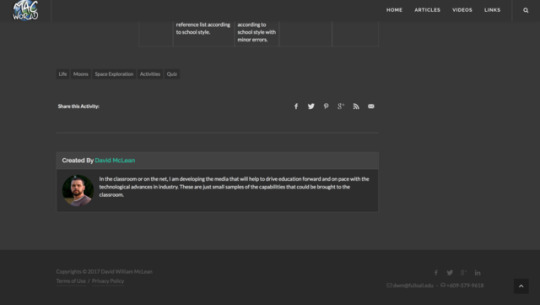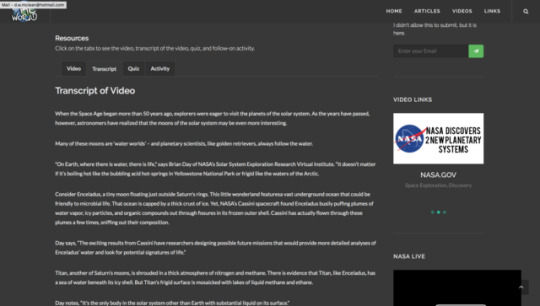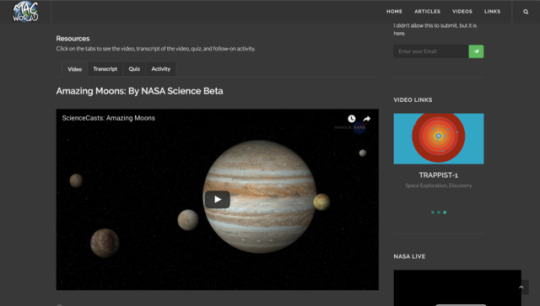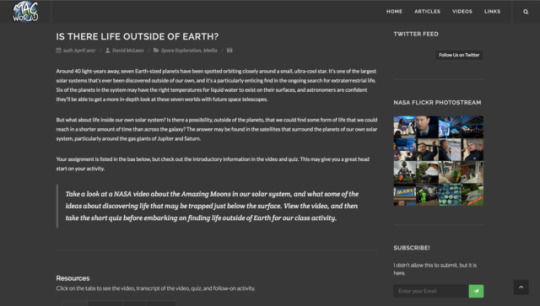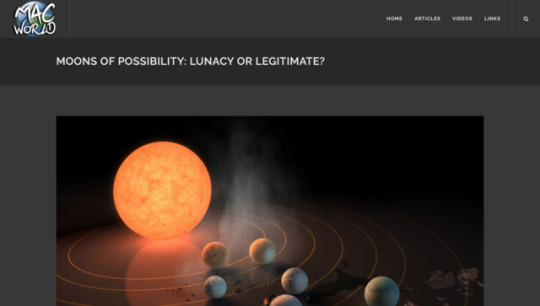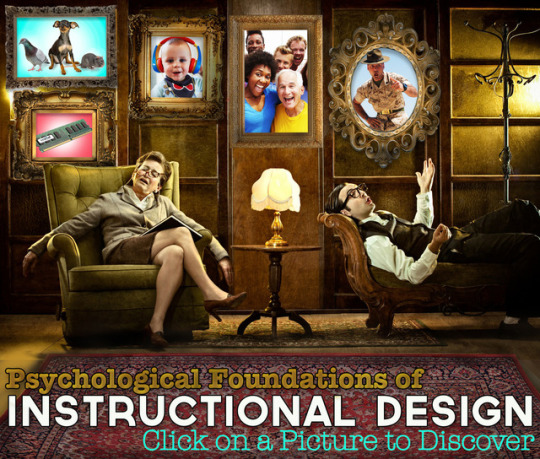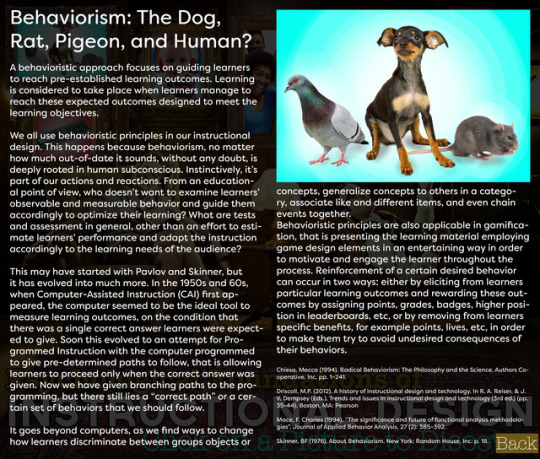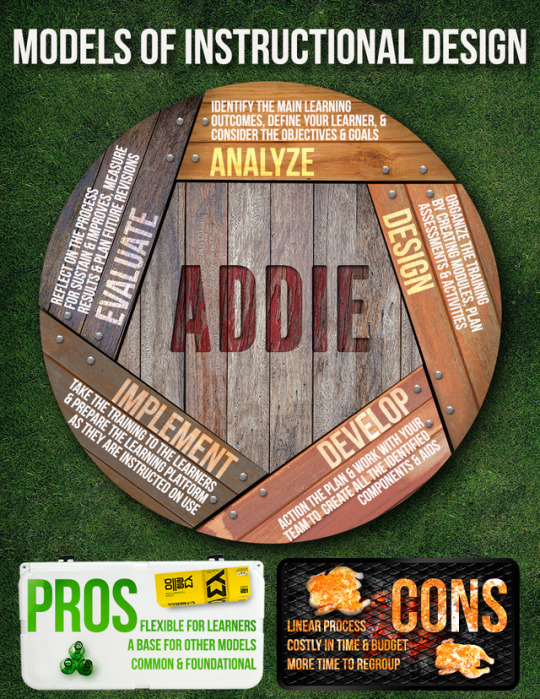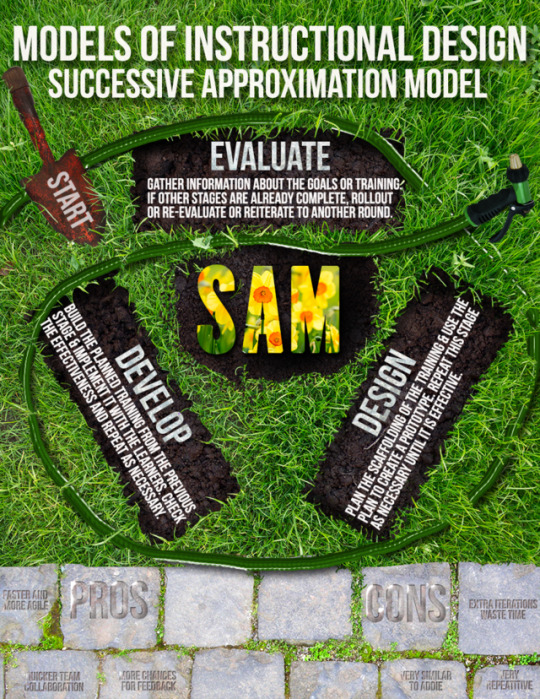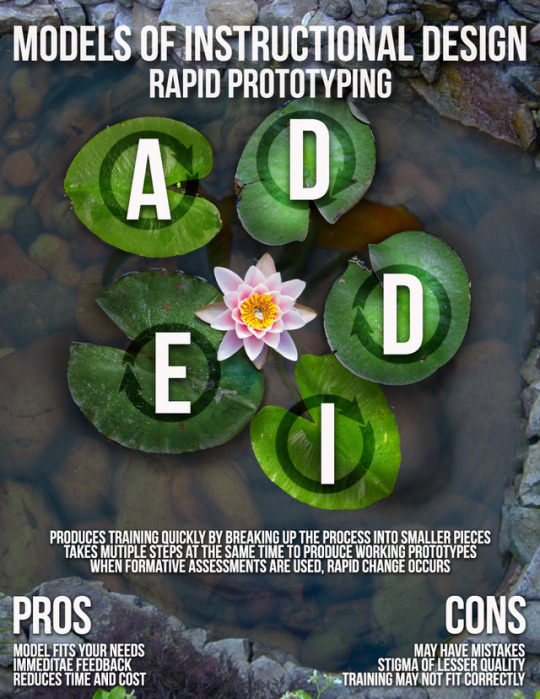Text
The finish...Month 12
1. How has each course contributed to your personal and professional development as an instructional designer?
Mastery: Personal Development and Leadership
Made me look ahead and plan, even though the plans were all for naught. Each course had specific readings and videos for tutorials, so I didn’t need to reinvent the wheel when planning out my goals.
Strategies for Learner Engagement
I dove back into Illustrator, which is one of the first Adobe products I ever used. I really tried to learn the finer aspects of the program, and making interactive elements with a vector program is pretty cool.
Visual and Verbal Communication in Instructional Design
I remember why I hate stock photography, and choose to send someone to get the image or take it myself. I went beyond what I needed to do to make the product look right. To this day, it is one of my favorite while in the program.
Corporate Training and Motivational Development
Developing effective campaigns begins with effective research. I went through great lengths to find b-roll for this project and to make the presentation mine. I surprised myself with the end product, because I disliked the subject matter so much.
Instructional Design and Evaluation
This class was my worst class, and it was more about trying to complete in time while being on active duty orders. Sometimes your client (instructor) has no concern for how your life is going, and will not be accommodating when they want a product. Sometimes you have to power through and apologize profusely.
Digital Media and Learning Applications
Professionally, I took on the role of an educator during this course. Coding is what I have been doing for a number of years, and it can be difficult for some to grasp at the speed at which we work. I made a choice to help out others, and it went well for most.
Music and Audio for Instructional Design
I went back to many of my musical roots and picked up my dusty guitar to make some music for my narration pieces. I really refined my scriptwriting and editing, which are the problem areas I sometimes have when developing a visual product. I will create wonderful storyboards, but have no substantiated audio to accompany it.
Filmmaking Principles for Instructional Design
I love making films, and I wanted to work outside of the norm and make a different type of product. Professionally, you can do the same thing over and over again, but it may get stale and old after a while. I took the same old product and gave it a storyline.
Game Strategies and Motivation
I have never made a game before, and this course was abstract as to the development of games. I developed a concept and then ran it through some storyline progressions. I have submitted it as a project where I work, and we may find someone to help us develop it into a military simulation. So, I may have a concept to finish product soon.
Learning Management Systems and Organization
Personally, I learned a great deal of patience with the switching of instructors and lack of guidance. A LMS is not that different between platforms, so find the similarities and the differences and exploit them.
Media Asset Creation
I can do great work in a short amount of time. Professionally, I was using multitasking as I had to set of future weeks projects while finishing another product. It felt a lot like work. Personally, I used my phone to video my game concept. I have told myself that no serious professional would use a phone. It did not do that bad, and made it feel “real”.
Final Instructional Design and Technology Project
I like looking back at my portfolio and remembering what it took to create those elements. I have much to be proud of and I am now looking to market myself out to a few new corners of the world. I have had to take a deep look at how I am seen in the world, and I have decided to make a few changes to “soften” my image.
2. How well were you able to utilize the concepts and techniques you learned from the program (theories, systems design, interface styling, and the creation of multimedia content) as you designed, developed, and implemented your Final Project?
I would throw the design models out the window when we did these projects. There was not enough time to even develop what would go into the ADDIE or SAM models. It was nice understanding the Training and Needs Analysis from a previous instructor and working from there. I think much of the initial creativity gets lost when you are facing structured tasks with very specific guidelines, and there was little room for error. Some of the projects from others had a look and feel of exactly what they had been shown in class with very little personal creativity. I tried to branch out and it was rewarded, but I did not use many of the techniques we were taught. In order to be innovative, you have to move beyond what you were taught.
I did use some of the evaluative measures when making corrections to my own work and that of my cohorts. These projects felt different due to the time crunch, but many of the techniques we have been taught on this journey were too basic to suffice for the level of project we were creating. I used elements, but I know that they have been engrained in me as a designer outside of the program, and not necessarily because I was taught them.
3. Describe your most outstanding personal triumph in each course.
Mastery: Personal Development and Leadership
Getting back into the research and writing groove after taking some time away from formal education.
Strategies for Learner Engagement
Using Illustrator for more than the pen tool.
Visual and Verbal Communication in Instructional Design
I held my tongue and did not lash out for what were obvious errors and miscommunications from faculty. I was able to bury some of the ill sentiment, and still complete professional projects.
Corporate Training and Motivational Development
Working with a team and allowing them to do their parts with minimal oversite from me. If I am in a project environment, I want to be overlord. I willingly gave it up, and took a lesser role.
Instructional Design and Evaluation
I decided to try and theme my creations, as well as use technology other than what we were instructed to do so. I do not like freeware, and I will choose a more difficult path to avoid using something that falls into that category.
Digital Media and Learning Applications
I debugged multiple lines of code by sight, and not by using an error tool. Now I did not use the freeware, but my professional software that we were given to use in these classes. I demonstrated the abilities of the program, and maybe converted some into followers.
Music and Audio for Instructional Design
I went and did Foley work for the first time in almost 10 years. I forgot how much fun it is to make sounds and record different things around town. I got a chance to have fun with my son while doing schoolwork.
Filmmaking Principles for Instructional Design
While on my state active duty for two weeks, I managed to wrangle together actors, a crew, and film an absurd tutorial on how to eat a MRE. This was in between a simulated airline crash, major hazmat response, and riots that had to be filmed and edited for immediate disclosure. Busy month, but showed me that I can manage my time effectively.
Game Strategies and Motivation
I find this course difficult to rate because we did not make a game, and I feel like there was little actual success outside of making great grades.
Learning Management Systems and Organization
I made a LMS course for an actual teacher who is using the base I laid out as a supplemental for her class. I am proud that I made something useful and not just a simulated product.
Media Asset Creation
I made demo materials for a campaign at work where I am trying to get a client to use our services. I do not know the outcome yet, but they were impressed with my game concept and loved the look of the interviews I shot. We will see in a few weeks.
Final Instructional Design and Technology Project
I have a portfolio that is still incomplete from my perspective, but that portrays my work in a light that I like. I have many portfolios out there in Deviant art, some personal creations using my web skills, and an old BeHance profile that I am trying to salvage work from. One day I will be satisfied with my work, but until then, I will keep plugging away.
0 notes
Photo
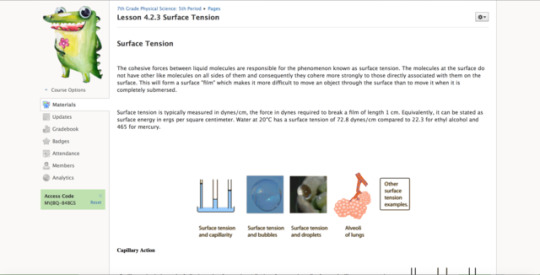
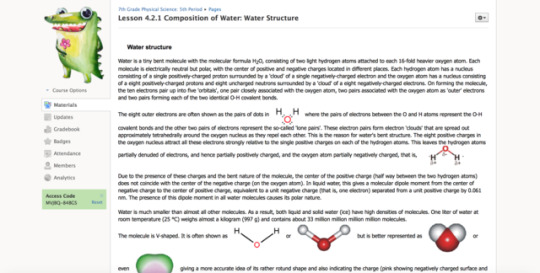


Above: Some of the individual elements of the module designed for a 7th grade science classroom. The module itself was about water, and it was designed as a companion to a traditional course taking place at my daughter’s school.
Reflect: I enjoy developing elements and curriculum, and I like working in the digital space. This project last month was just the exercise of building and planning, which took me back to my school teaching days. The only difference was that there was not a group of students waiting in the end to complain and help modify. This time there were other designers trying to make their own projects work, while breaking down my own elements. I enjoyed the fact that we were really free on this project because of a lack of supervision from the instructor, but it created a level of confusion not rivaled at any time during this master’s program.
Inquire: Without any supervision, where could I have taken the project? I stayed within the lines of doing a module, but I could have done so much more. My project was specifically designed for a real classroom, but I only did the first set. I was not really sure if the teacher would adopt it, so I did not want to invest too much time into the work. I think I shortchanged myself and what I can make.
Suggest: I did not make some of the elements I had planned because I did not think I had enough time. Then I found myself sitting and waiting instead of pushing up to the final moment to complete something new. I also had open opportunities to help my classmates, but I passed on a few. I know that I have a set of skills that are different from many in the group, and I could have helped develop some things for Justin in particular that would have really enhanced his work. I need to take the time to mentor, as my knowledge can be transferred to others. I can see the holes in some of their projects, and I have the right patch to fix them.
Elevate: My branding approach has been weak in many of my school projects. I can usually let people know it is my work without having to work paste anything on it. These projects have been different, and I do not have my usual level of finish. It has to do with the time factor for most of these courses, as we get no longer than four weeks from beginning to completion. This has hurt some of the ways that I stylize or incorporate larger themes when building a curriculum. The next time, I start with my brand and the objects I do well, then I work into the lesser known or weaker subject matter. I know that I need to work on the areas that I am weaker in, but I need to show future employer or contracts what I can do.
0 notes
Text
1) Should instructional designers be required to be industry certified to practice in the profession? Why or why not? Your response should include relevant facts and information from the reading assignment and research from outside sources that support your argument and must include accurate, in-text APA-style citations.
I would like to see the industry require certification in order to be an instructional designer. Most professions must certify in order to practice, and a lack of certification seems to make the profession somewhat less. I agree with Dempsey and Van Eck (2012) when they state, “instructional designers have an identity crisis” (p.286). We have no continuity in program names, and our graduate programs lack the graduate level of instruction because of the entry level of individuals into the field. We are not building a strong foundation to show that we are a community of professionals, or that we even have unity across our group.
Certification would enable a standard to be set across the profession for certain benchmarks and skills that must be acquired in training. Schools would then have to align their curriculum to that standard in order to certify students. Usually in a certification field, as set number of courses are required, there are pathways that must be followed. This would also be helpful if a student would need to transfer to another program, or they go for an advanced degree. Many other professions have a certifying body that regulates the industry, like education, the medical professions, and even interior designers.
Budnick (2013) states, “a good certification system should "raise the bar" for practice, continually improving and updating its requirements to match the needs of the marketplace and the state-of-the-art in the field of practice” (para. 8). I have no issues submitting to a certifying body if they act as the gatekeepers to the profession. It takes a certain set of skills in order to the job we are doing, and certification only makes our claim stronger that we are the ones who should be designing and developing. If we do not unify across our base, we only risk not being taken seriously and having individuals who do not meet minimum certifications practicing alongside.
This is an example of the state of programs and the wild naming conventions across programs currently as provided by Winstead (2017).
Organization, Course name, Credits, Total cost and duration
George Mason University
Fairfax, Virginia
E-Learning Graduate Certificate
15
Upon request
UCI Division of Continuing Education
Irvine, California
E-Learning Instructional Design
15
Upon request
Harvard University
Cambridge, Massachusetts
Learning Design and Technology Certificate
16
$10,200
1.5 years
University of Washington
Seattle, Washington
E-Learning design & development
Upon request
$4,310
6–8 months
University of North Dakota
Grand Forks, North Dakota
Instructional Design Certificate Online
12
Upon request
University of Massachusetts Boston
Boston, Massachusetts
Instructional Technology Design
15
Upon request
Oregon State University
Corvallis, Oregon
E-Learning Instructional Design and Development
18
$1,755
Six weeks
University of Georgia
Athens, Georgia
Graduate Certificate eLearning Design
15
$11,000
12 months
Northeastern University
Boston, Massachusetts
Graduate Certificate in eLearning and Instructional Design
16
Upon request
Saint Leo University
Saint Leo, Florida
Graduate Certificate in Instructional Design
15
Upon request
University of Arizona
Tucson, Arizona
Graduate Certificate in Instructional Design and Technology
15
Upon request
University of California
Oakland, California
Teaching Online Certificate
13
$1,705
1–2 months
UHM College of Education
Honolulu, Hawaii
GCERT Learning Design and Technology: Online Learning and Teaching
15
12 months, price upon request
University of North Carolina Wilmington, Wilmington, North Carolina
ITS/TF Certificate Program
18
Upon request
La Salle University
Philadelphia, Pennsylvania
Instructional Technology Management
18
Upon request
Boise State University
Boise, Idaho
Workplace Instructional Design
18
$8,100, duration upon request
Colorado State University-Global Campus
Greenwood Village, Colorado
K-12 education technology and instructional design
12
Upon request
Florida State University
Tallahassee, Florida
Online Instructional Development
15
Upon request
The George Washington University
Washington, D.C.
Graduate Certificate in Instructional Design
Upon request
Upon request
Graduate School of Education and Human Development
Washington, D.C.
Graduate Certificate in Instructional Design
18
Upon request
Indiana University Bloomington
Bloomington, Indiana
Instructional Systems Technology
15
Upon request
University of Wisconsin-Stout
Menomonie, Wisconsin
Online Instructional Design Graduate Certificate
Upon request
$1,305 per course
8 months
Walden University
Minneapolis, Minnesota
Post-Baccalaureate Certificate in Instructional Design and Technology
12
$7,940, duration upon request
Georgia State University
Atlanta, Georgia
Instructional Design and Technology
12
Upon request
Bloomsburg University of Pennsylvania
Bloomsburg, Pennsylvania
eLearning Developer Certificate
12
Upon request
Association for Talent Development
Alexandria, Virginia
E-Learning Instructional Design Certificate
Upon request
$1,480, duration upon request
American Military University
Charles Town, West Virginia
Instructional Design and Delivery
18
$4,860
1 year
Drexel University Online
Philadelphia, Pennsylvania
Graduate Certificate in Instructional Design
27
$24,138
4 months
Saint Joseph’s University
Philadelphia and Bala Cynwyd, Pennsylvania
Certification for Instructional Design and Technology Specialists
Upon request
Upon request
University of Texas Rio Grande Valley
Brownsville, Edinburg, Harlingen, McAllen, Rio Grande City, South Padre Island, Texas
E-Learning Graduate Certificate
15
$8,841 in total
12 months
2) Explain why continuing education in instructional design and technology is important, and how you plan to continue to develop your technical skills to remain competitive in the field. Refer to at least one outside source.
Industries are constantly changing. Continuing education is required for workers to stay current with the latest developments, skills, and new technologies required for their fields. Certain professions also require continuing education to comply with laws, remain licensed or certified, or maintain membership in an association or licensing body. Overall, continuing education is considered a way for professionals to keep abreast of their fields so they don’t lag behind. Even though we have no organized professional body for instructional design, it is on us to continue to develop so that we keep pace with all of the change.
CHCP (2014) listed 10 reasons why someone should continue their education:
1. Be more qualified.
2. Make more money.
3. Demonstrate success.
4. Gain a competitive edge.
5. Secure your future.
6. A better lifestyle.
7. Gain confidence.
8. Improve your social network.
9. Improve your discipline.
10. Improve your business network.
While some of these are really self-serving, some help the profession as a whole. Being more qualified, improving the discipline, and improving the social network all help to advance the community of practice. This in turn will produce better engagements among fellow practitioners in the field.
I am not allowed to go for the doctorate at this time, as my wife is through with me pursuing additional degrees. I have other ways to improve myself, as I can run my own blogs and continue to write articles for my discipline. I am in the military segment, and that special area has its own quirks which need to be written about. There are also networking opportunities where I can visit with some of the other designers at the ATSC conferences. How much easier this would be if we had a professional certifying body that required CTE’s so that everyone would have a central location to share.
3) Considering how quickly eLearning theories and practices have evolved, and in anticipating more changes in the future, how will you ensure that you as an instructional design professional will keep abreast of future changes? Your response should include relevant facts and information from the reading assignment and outside sources that support your argument and must include accurate, in-text APA-style citations.
Dempsey and Van Eck (2012) state, “more complex e-learning systems are appearing at an unprecedented rate and can be mystifying” (p. 287). Trying to keep up with everything is impossible, but you can manage to find the right combination of tools that can keep you up to date. The first is to try an hone in on what technologies are going to stay around.
Adobe is a company that leads the charge in many design areas. I know people that love Corel products as well, but Adobe is the gold standard for many of the tools we use. They update and release new programs every few months, and if you subscribe to certain feeds, you can often try the beta version, or see features before the product launch. It becomes important to pay attention to new products rolling out into the market, because they may replace something you use now, or bundle it into a new product. Often, having the subscription will also allow you to enter areas where certain types of training are available, and every little bit helps to keep on the upside of the curve.
Subscribing to Journals in the field are also very helpful to keep current in what is being published in the profession. There are many different journals at this point, and they cover technology, education, computers, and learning. None have an official “Instructional Design and Technology” Journal name, but many are closely related with the design and education fields. Some even have some open acceptance for opportunities to publish, which is another avenue to stay current. The best way to keep out in front of the changes is to be the one making the changes. Then, everyone has to keep up with you.
References
Budnick, P. (2013, May 8). Professional certification: why it’s important, why you should embrace it. Retrieved from https://ergoweb.com/professional-certification-why-its-important-why-you-should-embrace-it-2/
CHCP (2014, March 4). 10 good reasons to continue your education [Blog post]. Retrieved from https://www.chcp.edu/blog/10-good-reasons-continue-your-education
Dempsey, J. & Van Eck, R (2012). E-learning and instructional design. In R. Reiser, & J. Dempsey (eds.), Trends and issues in instructional design and technology (3rd ed.). Boston, MA: Pearson
Winstead, S. (2017, March 19). Top 30 online instructional design certificate programs [Blog post]. Retrieved from https://myelearningworld.com/top-id-certificate-programs/
0 notes
Text
Month 8
Reflect
This month was one of the most hectic due to an obligation with the military during the middle weeks of the class. Knowing this ahead of time, I used what resources I thought would be available when it came time to shoot and geared it directly to that audience. Nothing went right. I had very limited personal time due to mission constraints, and I had to coordinate with other units to find resources and manpower.
My original plans included multiple cameras, some people for gear, a quiet location, and willing participants. None of that happened. Despite the best laid plans, it came down to a time crunch and bribing units to get the participation I needed. Once I had the actors, it was no issue, but I was never able to get the same set twice. I loved the script and spitballed it with my creative team and some of the producers at work. They helped refine the visuals for the storyboard, which looked nothing like what was required during the initial phases of the project. I had to rededicate hours to conforming to a non-industry standard template. This made a lot of extra work, but video requires many pieces to be effective and look good at the same time.
Sound was horrendous on location, so using the lavalier was the only workable audio source. I spent hours of my life editing and filtering the audio to get the heavy equipment out. Lighting was difficult without any C-stands or grips, so I winged it and went “guerilla”. I am only semi-pleased with the final result, as I had to make frame edits and zoom in post to make the frame better, or edit out off-screen actions that fell into the frame during shooting. As it stands, I like being the creative director or producer, but not the crew. Being a one-man shop was very difficult.
Inquire
I will ask myself in every project, “What things could have I done better?” I had an extensive planning and dedication to the project, but the plan does not also work out. I know that I could have foreseen some of the issues, but never all of them. It was incredibly frustrating to not get the same set of actors for the different takes, and I would make that the number one issue to overcome. Having the same people allows re-shoots, which I was not able to do. Even if I did not have the same setting, I can fake it by taking the depth of field down or tightening the shot. In worse case scenarios, I could green screen the shot and add some of the B-roll from previous sets. Despite as negative as I sound, the video is not that bad, and it does communicate the exact idea I wrote in the script.
Suggest
As the video currently stands, I hate the zooms and the reduced quality of a few frames. I want to re-shoot this at work where I can control the conditions and have at least two cameras recording. When I look at it, it seems very boring as I bounce from a basic two-shot to a wide. I like to have some kind of motion involved, so I would use a dolly on quite a few shots. Since I was shooting alone I had to direct, feed lines, be the audio guy, provide catering, hold my own boom pole, and wrangle actors at the same time. That is too much for one individual, so I would also bring a crew. I realize many low budget and student films do not have the resources for a crew, but I would figure something out. I had to trade my government vehicle for 4 hours to this unit so I could use their Soldiers, so I know I work some kind of deal for a crew.
Elevate
Professionally, I have a hard time putting this in my highlight reel. I want it 2K, with some cine-color work, and at least some better opening and closing titles. I did have this approved as a crew refresher at our next training symposium, so it will be made again. I am taking the poorer quality version as an example of what we do not want to do and allowing the specific areas of our production facility to remake the video. This is a helpful process for our entire staff, as this type of exercise allows many voices to come together to create a better product.
The lack of a team during production was a very eye-opening process. No one person should be making all of the creative and technical decisions, as this creates a very narrow view of the topic. This course did not teach me any new tricks or techniques, but it made me very appreciative of the people I work with every day. I am surrounded by incredible directors, producers, cinematographers, writers, camera operators, sound technicians, editors, and graphic artists. Everyone has a unique part of the puzzle, and in order to make the final picture, every piece must be used.
A final note, I was unable to save the digital script or storyboards due to a hard drive failure, but I have physical copies. I would post them if they were still digital.
0 notes
Text
Month 7
Reflect
This month was a joy for me to work in because I have a real love of audio and how to make it sound real. The first projects were fixers, which require a certain amount of skill, but then it moved into the creative projects. The first creative was re-telling a classic Brother’s Grimm fairy tale. I chose the Singing Bone, because it was just grotesque enough to make it interesting. There was a lot of work put in to develop the overall sound, and I played those two classical selections until my fingers hurt. I spent even more time walking around like an idiot with my headphones, audio recorder, and shotgun mike in the middle of tourist Williamsburg. The outcome was wonderful, even though I did not like the EDL that we were given to complete the assignment.
The next creative audio piece was very difficult. I wanted to edit the video so that I could use longer sets and really develop characters to speak in the intermediate sections. I had to do retakes at least 5 times with each actor. We finally got the audio set we wanted, and then I had to turn to creating some kind of score for the video. Once again, I played and it took too much time, but the end result was what I wanted.
Inquire
I was able to create a few tutorials in the aftermath of the class, but what if I was able to teach them when things were happening? I had one GTT that I was able to show a few techniques in Audition, and it was well received, but I did not see the techniques used in the other student’s work. I have a great deal of radio work in my past, and I have much higher knowledge in Adobe Audition than in GarageBand. I want to be able to give back to my fellow students and help them create in other tools.
Suggest
If I would have had more time, I would have done a more complete audio set with subsonic tones. I left the subsonic tones out because I could not map them properly in the short amount of time. I had the rest of the 5.1 sound, and I really wanted to direct attention to different areas of the sound spectrum to make the experience more enveloping. I had the right and left motions and the specific locations set, but I never had that low end to fill out the entire EQ range.
Elevate
In the future, I need to screen flow my work so I can share it quickly with others. I use very different techniques in the sound programs to get results, and I can show them to others. I need to have the teach first mindset, then complete the work in areas that I am the expert. Many different things about this program are showing me that I need to be the one helping others and getting them in touch with what is happening in the industry.
0 notes
Text
Month 6
Reflect
Month 6 was a time to travel back to when coding was simpler. The objective of the class was to design better assessments, and develop some Angular JS objects contained in a HTML wrapper. I have experience in both, so I was able to focus on refinement and enrichment of skills in this class. I have views about assessment that may fall in line with more constructivist ideals, where assessment is formative rather than summative and continual with the learner. The project focused on traditional assessment and developed some early stage authentic assessments, but most of the time was devoted to placing traditional elements into an interactive quiz.
I enjoyed working with other students, and helping them develop their code strategies. I understand where some of the weak points develop in a project like this, and I was able to help along a few students who were experiencing multiple issues. You really understand code when you can debug someone else’s code. I hated working from a template-restricted tutorial, as I want to work with original elements I create.
Inquire
There was a Twitter button that did not have the desired functionality, and I never got around to fixing it. What was the problem with the call? I still do not have any clue. I investigated in the API and some of the developer code, but could not find a direct call to make the code execute the script. I did figure out that the original code from the tutorial was published slightly before Twitter made some authentication changes, which would account for why the script would not execute. It is usually a backwards process to see where the problem will trigger, but it was never right, so finding the one piece is even more difficult.
Suggest
Much of what I heard in this class was a group of people lauding some of the skills I currently possess. I have worked hard to develop skills, but I need to jump it up higher in all areas. My question development could have taken a much higher route. I have developed curriculum when I was teaching, and it required an in depth look at the assessment mechanisms. I only did what was required for the course, but I have much more to offer in the world of assessment. Part of my drive is to do something better, bigger, or new, but I succumbed to the “get it done” principle in light of all the work that is required every thirty days.
In this class, I did not get much feedback for the physical project from my peers. They were just trying to cope with what I had done in the creation of the website. My instructor praised my efforts in the design of the expanded website, and continually had talks about making the next steps towards a higher degree program. My goals are putting me in line to change some of the education of the US Army, but I am not sure if I want to help shape the face of the profession.
Elevate
I would like to do this class from scratch, without tutorials, and really push the limits of what I can do. I can already develop websites and Angular elements, so I would develop a robust question bank and server elements to create something secure and personal. That is where I need to work more in my professional skill set, as I do a large amount of front end work. I want to do back end server sides and developing secure databases, as this is where I think the instructional design world meets the developer world. I want to be able to be the best in the field, but also able to create the appropriate bridges and be able to monitor progress during a project. I know if I push myself, others will also reap the benefits. I am in a community and need to develop for the community as well as myself.
0 notes
Text
Month 5 Reflections
Month 5 Reflection
Reflect:
There were a great many projects this month that required more than just one set of skills in the Adobe toolbox, and I was given the opportunity to really shake up some designs. Most of the issues for me were time related, and the critiques I received were mostly about stylistic changes. That being said, there were 4 posters, a HTML interactive timeline, interactive PDF, and a Keynote that was worked on as a group project. There were many ways to knock this down, but I decided to theme the first set, build the second from scratch using a horizontal framework, bring to life an old photo and make it new, and then design in a box as delivered to me.
I enjoy the multi-dimensional projects, as they shift the focus just enough each week to keep each project different from the others, yet still have some of the same themes. I was really frustrated with my inability to work out the initial poster set as a truly complete design concept. Other classmates were throwing in great ideas, and I was adopting them as quickly as possible, but the final outcome did not meet the needs of the project. There was an element of information I was failing to provide, and I could not figure out how to work it into the design. I also had some issues with the look, as I had used an overhead effect for three posters, but had to go to a horizontal perspective to finish the last concept.
Instructional Design Model Posters
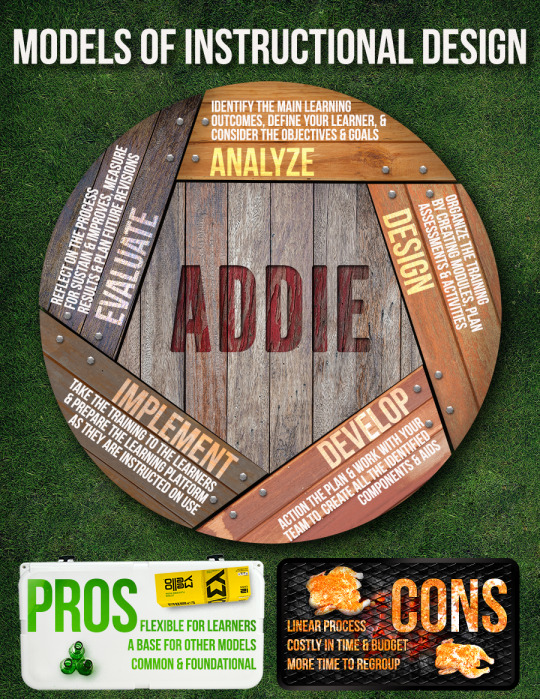

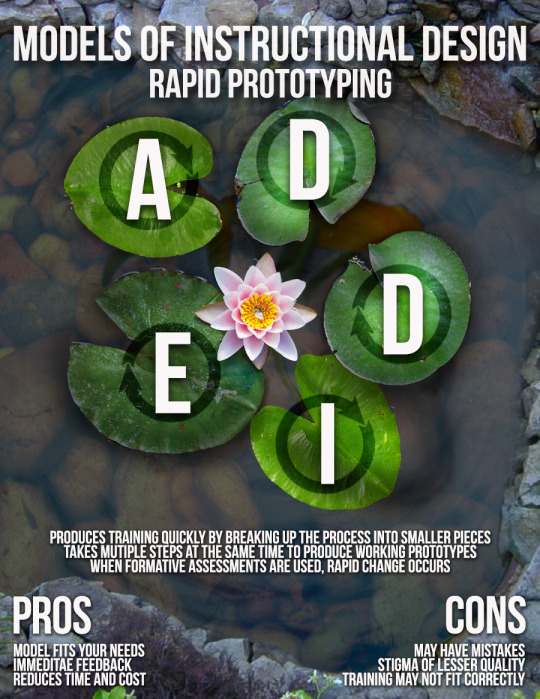
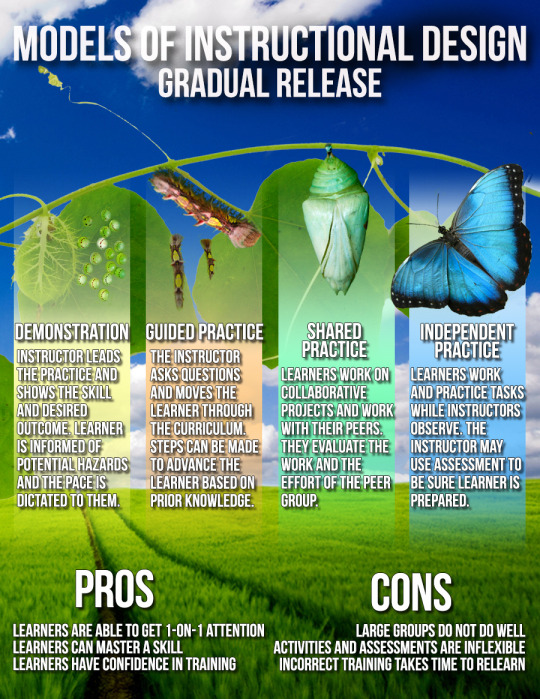
This set of 4 posters were not difficult if I would have followed the prescribed pathway, but I took it on myself to introduce some new elements. I enjoyed the interaction with my peers as they were more than helpful to introduce some good design ideas. I had issues with access during this time, so I did not get my feedback in a timely manner to really make the changes I desired.
Instructional Timeline

The timeline project had two options: Use the preformatted program, or make your own. I decided that making my own looks better. I wanted to try a bit of CSS trickery, and develop a side scrolling single page for this project. I was more than pleased, and it was easy to develop. I did have a spacing issue that I did not resolve in the code, but it turned out very well.
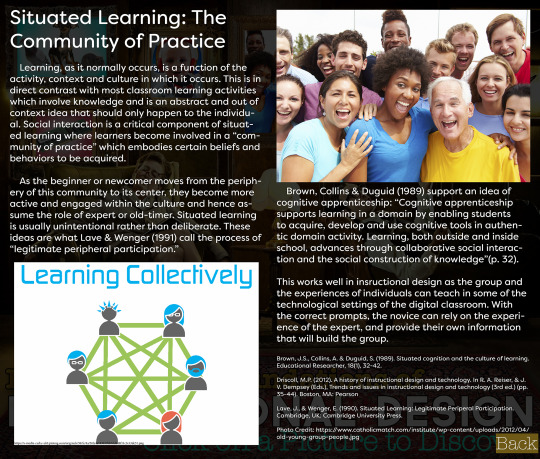


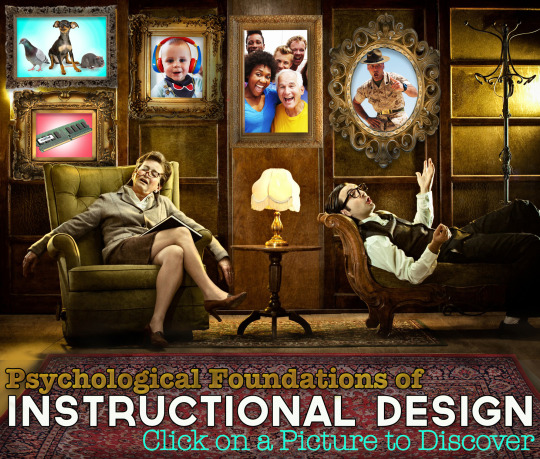

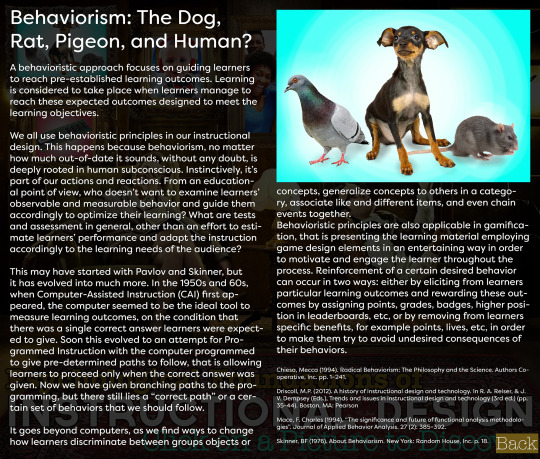
Interactive PDF
I enjoyed taking a photo and creating a new dimension to it. The psychological backgrounds in instructional design and very similar to those found in education, where I have a previous experience. I wanted something witty and fun, but still able to accomplish the assignment. The peer and professor feedback were about some spacing and formats of the written text, but overall it was a good product.
Final Project
Since this was a group effort, I don’t really want to expound too much on it. There were issues, but I was the Art Design lead, so some of the issues were out of my hands because of the predetermined format that the team chose. My end had held up nicely, and if we had done the video format, it would have been perfect in timing and embedded fonts. Consequently, I could not change these, and it did not matter all that much.
Inquire
Where would be the best places to make the improvements? I know the work has some small issues, like a drop shadow on the gradual release or some of the spacing in the interactive text, but what changes would have the best bang for the buck? I have doubts that the small changes would be all that impactful, but a redo on some of the work would work better. I want to redo the posters, but try to stay away from a nature theme. I think I could make it work in a mechanical design set, and use bolts and gears. It would still accomplish the same task, but I feel like I would have more material to use.
Suggest
Most of my suggestions are small and insignificant, but I would like to change up the interactive PDF assignment. I would like to make it a webpage that has regions and allows a higher level of interactivity. Most of it would be in the form of some Javascript markup that would allow a lightbox to display the additional information. This would enhance the information available because there are more options in the HTML, CSS, and Javascript universe.
Elevate
My elevate is usually a technical aspect taken to a new level, but I think that looking back and seeing how to make a full integration of products would be the way to go. Given that I have the assignment information now, how could I make a consistent design that spans these assignments? So, if I was going to do nature, how could I complete the group assignment with nature? I could not happen. I have to start with the final product, and work backwards. The group assignment was a development and concept design for a training product, so that would have to be the anchor for all of the products. I could see it working if done in that order, and then this whole month would be consistent.
0 notes
Text
Month 5
1) What did you learn from the reading assignment about the field of instructional design that you were not previously aware of? Why is this important to your goal of achieving mastery and your future as an instructional designer? Your response should be 3–5 paragraphs in length Include at least three quotes from the reading assignments with in-text citations using APA-style formatting.
After reading this chapter, I am very familiar with many of the ideas presented and can add volumes to what they say. The authors have taken an overarching theme, and barely show the first few steps of the twisted path an educational idea takes within the DoD system. Three challenges that are mentioned strike a nerve as;
“Using technology wisely when technology is evolving more rapidly than the ability to accommodate change; assuming the responsibilities dictated by one’s role and relationship to the military (federal worker or contractor); designing for individual projects, which may be repurposed into other training products or delivery environments” (Bratton-Jeffery & Jeffery, 2012, p. 187).
In each of these challenges, I have faced them first hand, and have had to change course in the direction of projects to better accommodate the needs of the program and the people on the ground using the training in the fight. Our current IEDES (Improvised Explosive Device Education System) has an electronic module that mimics GM20 and PRO45 signal jammers and that is mounted in up-armored vehicles to block radio signals to trigger blasts. They produced the training modules and equipment faster than the actual units to be mounted, and when the final version of the product hit the military vehicles, it was 4 generations forward of what was being trained. Colossal amounts of time and money were wasted, as Soldiers eventually came back and told the designers how they were being used in the field, and then they put together the revisions, which became an entirely new project under a new contract. The technology moves at a pace that is not predictive with the evolving scope of the battlefield, and many times it is the Soldier that with be the best sensor and trainer. And out of everything that was made in the forefront, only the illustrations of the unit remain.
I design much of the written literature that our training center oversees with diagrams and illustrations, which is then translated into 14 different languages to help our NATO allies use the same equipment. This brings to light another of the ideas from the authors, that there is a partnership for our military and many of the nations we train, fight alongside, and supply with our weaponry and tactics. Bratton-Jeffery and Jeffery (2012) state, “Designers must recognize the cultural diversity of the clients and select training or learning solutions that can accommodate dissimilar audiences” (p. 189). For our European, Central and South American counterparts, the writing only changes in language formats and labels. For some of our Southwest Asia partners, we have to go a step further and provide cartoons to go along with our training. It seems small, but they understand the material easier reading cartoons and seeing the action in the strips than having the information in manual format.
The last issue I wish to weigh in on is one issue that will always affect the instructional designer: funding. Budgets today fluctuate, and every program can cease to exist in the military marketplace in as little as six months. What the book fails to mention is the understanding of programs of record, training directorates, and fund appropriation allocation. Without getting into the weeds of the government machine, there will always be money for training, but the government wants to get the most bang for the buck. Programs of record are the first funded projects that support main operations, and have the ability to be interconnected with other service branches, groups within a service, and international reach. This involves direct training like Apache repair or weapon systems, or a DoD wide program like the EST 2.0 (Engagement Skills Trainer) which uses a digital range to hone the skills of military members across all the branches. They fluctuate in dollars and this is important because, “Whatever funds are applied to one project may be taken from another, and the designer must be able to help the client weigh the costs or trade-offs” (Bratton-Jeffery & Jeffery, 2012, p. 189). Money is shifted from time to time, and there is a five-year cycle where the funding is revised, and long term goals and monitoring are implemented. Training directorates have pet projects that will usually be funded, but are on the yearly cycle for renewals. These projects are done usually through contact bidding, and awarded to the low bidder. Many of these projects are started, completed, and then revised by another company in another cycle. The Army’s NCO 2020 Vision and transgender training fall under these categories. Fund appropriation allocations are the shortest lived of the budget projects, and have a very short shelf life and are designed to tackle one issue very quickly. The Marine Corp is currently in a rapid development process with all of the news and focus on the Corp for the abuse of female Marines on social media. While these contracts can be lucrative, the turn-around times and deadlines are very tight, and the product has to be a flawless as possible.
I did not learn anything new from this chapter reading, but I found many ideas that I face even without being the instructional designer on multiple projects. The military is not that different from other large corporations in some of the difficulties that will be faced, but the margin for error is very slender in light of what improper training can yield. Understanding the military system is the first key to being successful in this environment where rank and structure can sometimes be the only thing holding together a fragile peace. After that, knowing how government works and operates is the second most important in order to be successful and expedient. Many ideas can die quickly if they do not have the correct route to funding, approval, and contracts. Finally, the end user is the defender of freedom and the American way. That makes them far more important, and worth the time and effort to make them the best training possible.
2) If creativity in instructional design refers to the use of special human talents and imagination in generating original ideas, how did you use your creativity to expand your work beyond the limitations imposed in this month’s design projects? Elaborate in 2–3 paragraphs. Use images or screenshots from your projects to illustrate your points.
I tried my hardest to create outside of the box, but within the limits of the assignments. My first foray was for our Instructional Design Models. I wanted to do something closer to a nature, top-down perspective with natural materials and new design illustrations. I made some that I am really proud of, and one that just missed the mark. I was unhappy with my last poster for the gradual release model. It lacked the appeal I was desiring to capture. The timeline was a success for me, as I decided to hand-code instead of use a prefab program. I took longer, but the quality was much better than I expected. I also tried a new js coding for horizontal scrolling, and I worked out the bugs in less time than it usually takes. I am really proud of my psychological theories interactive. I used some old materials and then made new composites to fit the theme. It really looked good, and on first glance it was a home run. There are some design issues upon review, but I am still proud to stand by this work.
The final project was something of a challenge for me. I do not like keynote, and I know my colleagues have heard enough about this. I really wanted a video, but I was not the project lead, but I was the art director. I had to use many different techniques to tell this story and make it seem closer to video, which is where I am really comfortable. I made a specific color palette, suggested a firm looking logo, and went to town in DVIDs to find pictures to use. I ended up using 75 percent of my own photos, as I shoot with design in mind, and they were easier to work with. When I started working in the transitions, I found the edge I was looking for to mimic film movements. I do like what I was able to create, knowing that I had to look out for the team above myself. I have the tendency to try new and more exciting things when working on schoolwork, but I stayed conventional to please everyone.
3) List at least 3 main takeaways from this course and how they may apply to your monthly milestone and long-term goals. How will you use what you have learned in this course to continue to learn and improve your work as an instructional designer?
Deadlines and circumstances are in place to push the envelope of developing work within a timeframe, and to hold us (students) accountable. I had a rough month with having to report for duty in week two, and it threw my entire schedule into an uproar. I battled back and was able to complete all of the work, even if outside the timeframe. Clients will not always be forgiving, so professors may not be as well. A good lesson learned.
Theories and models are nice, but it is always about how they are applied. I learned a few new theories that are used in the instructional design world, or at least their names, as these models are in place at work. I like the ideas they present, and I even tried to use one as I was working on two projects. As an individual, they did not work as well, because I was lacking a client and a quality control process. I was not asking myself the right questions, and that gave me poor answers. Understanding where I am working from and what I need to do, I can use the models better as part of a team.
I have rarely had the opportunity to be the client. In most of my situations, I am the one taking orders from the client, and then I work hard to make a product. If I have a need, I usually figure it out for myself before coming to someone else to solve a problem. The project gave me the opportunity to be the client, and I see how some of the problems happen from the beginning stages of a project. There were so many other questions I feel I should have been asked, and when I reviewed what they were proposing, I did not agree at first. I really tried to put myself in the mind of one of the G3 guys sitting across the table from a contractor describing my training problem and what we needed to fix it. I will take this experience when I sit across the table next month, as I will have to begin working on the next recruiting tool of the Army. I want to meet the goals, and I know how to ask better questions to get the communication straight from the beginning.
Bratton-Jeffery, M.F. & Jeffery, A. B. (2012). Instructional design opportunities in military education and training environments. In R. A. Reiser, & J. V. Dempsey (Eds.), Trends and issues in instructional design and technology (3rd ed.) (pp. 187-196). Boston, MA: Pearson
0 notes
Text
4.4.1 Discussion
What does Kolovou discuss and/or demonstrate that you could have applied to improve your presentations during this course?
I have a few areas I need to work on and get into the groove with future work. I have trouble getting started and then finish strong. I am not sure I met that this time. Kolovou (2014) says, “I always see speakers deliver dynamite introductions and fizzle-out endings at the end of their presentation” (Delivering your presentation, Practice makes perfect, 2:34). When I write, I try to grab the initial attention, but this project stole the thunder away with the narrow scope. I did practice many times and many pitch variations.
I had a lot of trouble with eye contact and the camera. “In the United States eye contact communicates confidence and credibility” (Kolovou, 2014, Delivering your presentation, Strategic eye contact, 1:26). I did not have good contact because of an off-camera teleprompter, and a bad memory for my lines. When actors do it, it looks so easy. Looking into that camera gives you a serious and intense look. I really want to bone up on teleprompter use.
My message was strong in points, but I do not if anyone will remember what I said. For main lines of emphasis, I need to, “be strategic about them and practice them so your energy is strong and your message is clear” (Kolovou, 2014, Delivering your presentation, Opening and closing strong, 3:03). I worked a while on delivery. I have up inflections, serious tones, excited and hurried, and calm and gentle takes. I really wanted to focus the energy elsewhere, but I needed to have the right amount to get the points across.
Referring to the readings from your books, what key factors would the graphics in your presentations address in communicating the data/information effectively?
There are visual, auditory, and kinesthetic learners who have optimal environments. We primarily deal with the first two, because our medium does not have a tactile component, yet. Peters (2013) states that, “words and images are better than words alone for supporting learning” (Learning is visual, Strategies to reduce overload, para. 2). While this is a good start on the learning path, the combination of visuals and audio is better.
The modality effect is, “when pictures are explained by words in the audio format, the information is divided between the audio and the visual channels of working memory and in that way optimizes the capacity limits of working memory” (Reiser & Dempsey, 2012, p. 317). On the other hand, when a graphic is described with written words, “content is directed toward the visual center of working memory and leads to overload” (Reiser & Dempsey, 2012, p. 317). So, the answer is that a visual with audio is much easier to understand because there is no overload on one channel like text with an image.
My presentation walks the viewer through parts of Seaside, past the vehicles, and shows the key and important information. You hear my voice, and I tried to match the visuals with the topic at hand. I am trying to reach those channels in those visual learners who can follow the audio. Clear and simple is the best strategy, and I try to apply as much as possible in every presentation.
List at least 3 main takeaways from this course and how they may apply to your long-term goals. How will you use what you have learned in this course in your work as an instructional designer? What will you focus on to continually improve your presentations?
I am at a little point of confusion. This is corporate training and motivational development class, but we did not really hit key factors or discuss current topics in corporate training. The motivational development is not a far stretch, but outside of some late postings of reading material, the is not much about corporate training. Giving presentations is one way of accomplishing this in a face to face engagement, but we are learning to develop digital media and resources for distance education. Now the presentation we did would definitely work as part of an educational package, but that was the only relevant material outside of the generic design references of Peters (2013) Reiser and Dempsey (2012). The corporate environment has complex issues, and are having issues with employees retaining appropriate levels of information “with little practical follow-up or meaningful assessments, some 90% of new skills are lost within a year” (Silverman, 2012). I would want to focus more on this coursework, so I can capture as much as I can before attempting to pitch my wares in the corporate environment.
I will always work on my videos and how my craftsmanship is shown through my work. I do not use others’ ideas and I have the experience to show I am a subject matter expert in many parts of these projects. I tried to help my fellow classmates with detailed descriptions and writing through their work to give them an opportunity to grow. It helps me by developing a better critique plan and a way to communicate gently and enhance others’ work. I enjoy being able to look at what I say about their work, and then apply it to my own, as my own work is not excluded from the rules and critique.
Despite how well I shoot, edit, or post my work, I will always be subject to basic core ideas of design and presentation. I have a problem with this as I will go off and look for cool and sophisticated before I do simple and straight. Ullmen (2013) states, “when preparing your message, remember, complex confuses, but simple sticks” (Designing the content of your message, 0:48). Keep it simple stupid is one of the best analogies ever. The more twisted and buried the message is, the less likely that the viewer will dig that far down to figure it out. I have to always go back to this because I am one of those complex, plot-twisting, multi-levelled thinkers that will try to elevate everything to that level. I made this project so much harder than it needed to be, and I am suffering for it. The fact that I am posting this late is a testament of that post production time it took to get this together. I need to work smarter, not harder.
References
Kolovou, T. (2014, May 12). Presentation fundamentals [Lynda.com online course]. Retrieved from https://www.lynda.com/Business-Skills-tutorials/Presentation-Fundamentals/151544-2.html
Peters, Dorian. (2013). Interface design for learning: design strategies for learning experiences [E-reader Version]. Retrieved from http://ce.safaribooksonline.com/book/web-design-and-development/9780133365481
Reiser, R., Dempsey, J. (2012). Trends and Issues in Instructional Design and Technology (3rd ed.) (pp. 316-317). Boston, MA: Pearson Education, Inc.
Silverman, R., (2012, Oct. 26). So much training, so little to show for It. The Wall Street Journal. Retrieved from https://www.wsj.com/news/articles/SB10001424052970204425904578072950518558328
Ullmen, J. (2013, December 18). Communication fundamentals [Lynda.com online course]. Retrieved from http://www.lynda.com/tutorial/141501?org=fullsail.edu
0 notes
Text
EDM 533 Posting
What projected events on your timeline did you achieve this month?
My first response for the timeline is that it does not really coincide with anything that is happening in these specific classes. There was not enough information given when we did this mastery project in the very beginning, so I made what I thought were correct choices on goals. This has proven to be completely wrong. I still completed two of my Lynda.com courses outside of what we were doing for this class, so there was some success for my timeline. Most of the project work for this class was more tutorials, and less direct instruction. I had fun with the posters until it was graded, and the same with the infographic poster. I can only wait to see what the final presentation will hold.
The audio recording was fun, as I had most people in my department working the board at some point while I recorded. We also did alternative versions, which I cannot post, of some impressions, multiple languages, and initial reactions to my script. It was good to get my team involved, as they say I am becoming a hermit and am only working on schoolwork all the time. I am excited to get to the audio class, but I rather other people read my scripts and I direct them. I think the boss is regretting making me an associate producer.
I enjoy the creative parts of assignments that I mix in, but I still long for the less academic approach. I keep trying to break a mold here to show the others that more exists outside of these tutorials. There has been quite a bit of skill refining in these last few weeks, as I have not used graph tools in Illustrator in about four months. I did take the time to learn some things about Keynote, and even went through some tutorials on that program. Overall, I am progressing. I am getting frustrated that the Full Sail experience is little more than what I could get from my paid LinkedIn subscription with full access to Lynda.com tutorials. I wish the advice of Reiser and Dempsey (2012) were taken into account as, “we recommend that you adopt a learner-centered view of instruction that accommodates the limits and leverages the strengths of human memory and maintain a skeptical perspective on the learning panaceas claimed for the latest technological innovation” (Reiser & Dempsey, 2012, p. 318).
Going forward with this yearlong journey, what adjustments could you make to ensure your future success in achieving mastery? What concepts/techniques do you still need to learn about to gain mastery of the material? How do you know? What resources are available to you? What could you have done differently to improve your performance or contribution? How will you approach similar situations in the future? How does this experience inform your professional objectives?
I have a few concepts that I want to work on to get progressively better. The first is simplifying explanatory visuals. I have done work as a technical writer in the past, and that has always lead me into this idea that rich and complex is good, as long as it is given in manageable steps. Peters (2014) states, “Reducing visual elements will help learners recognize and understand graphics faster and let them focus on the important details” (Strategies to reduce overload, Simplify explanatory visuals, para. 1). I can always get more detailed, but I often have trouble moving in the opposite direction. This becomes a critical piece in creating age-level appropriate materials and still having the learners engage the visuals.
The second area I need to improve upon is in the visual perception category. I understand first recognition of objects, and what is preferred, but I get tired of cliché and ordinary. Peters says, “there is a preferred perspective at which we both imagine and most quickly recognize objects” (2014, Strategies to support visual perception, Strategies for supporting rapid recognition, para. 3). I always want to make something more creative or ornate, but it could always backfire. I hated some of the icons we were forced to use in the infographic and the following presentation, so I made a few others. They worked in this instance, but I do not know how this may work in the future.
Lastly, I need to work on my formal and correct APA styling. I had to do this many times for my last Master’s degree, and it seems as though it is coming back to bite me again. I intentionally avoided doing a doctorate so I would not have a dissertation, as I hate the formality of the education system. I do understand and agree with the concept of recognizing others work as an influence, but the massive system of rules and procedures are counterproductive in my opinion. Knowing that in month six I will have the same instructor; I need to prepare now.
Resources
Peters, D. (2014). Interface design for learning: Design strategies for learning experiences. San Francisco,
CA: New Riders. Retrieved from http://ce.safaribooksonline.com/book/web-design-and-development/9780133365481
Reiser, R., & Dempsey, J. (2012). Trends and issues in instructional design and technology. Boston, Ma: Pearson.


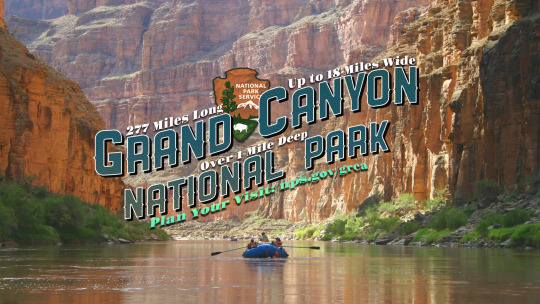
0 notes
Photo

For this month, I was able to achieve 2 out of three of my goals, with the last being at least partially complete at the time of this writing. I really buckled down and set out the schedule to complete assignments on time. This was slightly an issue last month, but I am proud to say that I have turned everything in on time this month (technically two left). One of the problems that I ran into was the assignments being locked, and not being able to see the timelines in advance. Every Sunday I would see the schedule, and put in my reminders and get to work. I will continue this trend as I have my work schedule populate on the same calendar, and it is easy to see early conflicts or heavy work days.
My second goal was to create better engagement for my materials, but I used it for my discussions instead. The article “Steps to Better Student Engagement” forced me to make the learning process less tedium, and more interaction. I was able to use elements like the culture of explanation to help guide another student instead of pointing out errors. This makes a more harmonious environment, and makes me more approachable when giving critique.
My last goal was to take a Lynda.com training on adult education, but I ended up doing the classwork tutorial instead. I was able to finish about half the modules for the one I selected, but the infographic tutorial was mandated, and definitely needed for the project. Again, in hindsight I would have liked to have some forewarning about what the classes entailed so I could structure my goals more in line with the curriculum.
I really enjoyed the interaction of this class, and the positive instruction that was provided. Technically, I already perform projects in this range but the discussion about the backgrounds and philosophies behind what create was an addition to my knowledge set. Educational philosophy was my most detested course when I finished my teaching degree, but I am finding the lessons are more useful now. I enjoyed the infographic project, really enjoyed the time spent in Illustrator, and learned a few new tricks along the way.
0 notes
Text
Mastery Timeline
MDL 501 Mastery: Personal Development and Leadership
The introductory class to professional writing, insights into what it takes to become a master, and figuring out the Full Sail Method.
Goal: Take concepts from Robert Greene’s Mastery and apply them to the journey I am on to finishing a Masters in Instructional Design and Technology.
Tactic: Take one key strategy from Creative-Active Phase and work on that aspect for a week in both my professional studies, and my workplace.
Goal: Read more inside of my new path to have a better understanding of concepts and trends.
Tactic: Read Robert Reiser’s History of Instructional Design and Technology.
Reiser, R.A. ETR&D (2001) 49: 53. doi:10.1007/BF02504506
Goal: Create in Tumblr outside of what I am comfortable, as this platform is unfamiliar, and post content that enhances my learning experience.
Tactic: Learn the platform better through LinkedIn/Lynda to make better posts.
https://www.linkedin.com/learning/up-and-running-with-tumblr
IDT 520 Strategies for Learner Engagement
Cognitive, learning, and motivation theories are the keystones for the development of curriculum, and this class explores the wide range of media, games, interactives, and collaboration for developing outstanding products.
Goal: Time management with a busy schedule can be difficult, so the effort is to use the calendar and set reminders for each assignment.
Tactic: At the onset of the class with the materials, set the entire calendar in advance with a breakdown for each assignment. The reminders will be at 2 days, 1 day, and 12 hours so assignments will be turned in within the time frame.
Goal: Create better engagement for my learning environment by using outside recommendations from experts in the field.
Tactic: Project-Based learning is my forte, so using steps found in Tristan de Fronderville’s article on Steps to Better Student Engagement to enhance what I currently use.
https://www.edutopia.org/project-learning-teaching-strategies
Goal: Find better resources for my least familiar group, Adult Learners, and utilize online training.
Tactic: Use LinkedIn/Lynda training available on the subject.
https://www.linkedin.com/learning/instructional-design-essentials-adult-learners
EDM 533 Visual and Verbal Communication in Instructional Design
This class emphasizes manuscript writing for content in defined areas. There are elements of visual design theories that make the content more palatable for the learner.
Goal: Gain knowledge into visual presentation and creating for specific target audiences.
Tactic: Use online course from LinkedIn/Lynda to look at how to teach complex subjects, and create the multimedia behind the coursework.
https://www.linkedin.com/learning/how-to-teach-complex-topics
Goal: Create better graphic designs for the educational system/learning modules.
Tactic: Use online course from LinkedIn/Lynda to have a better concept and application of Graphic Design Techniques.
https://www.linkedin.com/learning/before-after-graphic-design-techniques-2
Goal: Write more relevant course content with better deliverables for students.
Tactic: Instead of drowning my students in excessive content, find conducive work and relate it within the scope of instruction for action-based learning. Using LinkedIn/Lynda content, go through a short course in better writing of the content.
https://www.linkedin.com/learning/agile-instructional-design/write-the-course-content
IDT 552 Corporate Training and Motivational Development
This course takes an active look at methodology and techniques for the non-scholastic environment and how to motivate learners and staff, as well as using assessments and surveys to evaluate training.
Goal: Use assessments of material to redesign or develop the training to fit the needs of the learners.
Tactic: Watch LinkedIn/Lynda training on creating assessments.
https://www.linkedin.com/learning/educational-technology-for-student-success/creating-simple-assessments-using-educational-technology
Goal: Using software to design and develop training.
Tactic: Become more familiar with Articulate Storyline used in creation of content. This program is used in the Army training environment for development of modules, which is where I want to work upon completion of this degree.
https://www.linkedin.com/learning/up-and-running-with-articulate-storyline
Goal: Read outside sources for current trends and application in Corporate Environments.
Tactics: Read current periodical articles on topics related.
Akram A. El‐Tannir, (2002) "The corporate university model for continuous learning, training and development", Education + Training, Vol. 44 Iss: 2, pp.76 – 81
IDT 562 Instructional Design and Evaluation
In this course, I will learn how to evaluate a design strategy and examine which approach is best for academic or staff training environments. The course also investigates the multiple learning and emotional intelligence theories and how to use them in multiple environments.
Goal: Learning how to create an educational project and the management of resources using Keynote.
Tactic: Evaluate information provided by LinkedIn/Lynda on the use of Keynote, an educational software, and how to make more interactive lessons.
https://www.linkedin.com/learning/keynote-for-educators
Goal: Communicate learning Objectives more effectively.
Tactic: Use presentation in LinkedIn/Lynda to look at the needs analysis in ADDIE-aligned instructional processes.
https://www.linkedin.com/learning/instructional-design-essentials-needs-analysis
Goal: Use scholarly articles to develop strategies for emotionally intelligent learners for an exciting learning culture.
Tactic: Read article pertaining to emotionally intelligent learners from current sources.
http://www.eiconsortium.org/reprints/developing_emotionally_intelligent_organizations.html
Boyatzis, R.E. & Oosten, E. V. (2002). Developing emotionally intelligent organizations. In Roderick Millar (ed.), International Executive Development Programmes, 7th Edition. London: Kogan Page Publishers
IDT 574 Digital Media and Learning Applications
This course takes digital media and focuses on its use with learning applications. The design approach will also engage learning theories.
Goal: Explore different authoring tools in the creation of online learning media.
Tactic: Read and try different platforms for e-learning.
https://elearningindustry.com/list-of-authoring-tools-part-1
Goal: Look into video training and develop best practices for professional use.
Tactic: Use LinkedIn/Lynda training to develop guidelines for
https://www.linkedin.com/learning/instructional-design-essentials-creating-video-training
Goal: Increase proficiency in Adobe InDesign for creation of interactive infographics.
Tactic: Use LinkedIn/Lynda training to increase skills with InDesign animations
https://www.linkedin.com/learning/creating-animations-with-adobe-indesign-cc
MUS 6018 Music and Audio for Instructional Design
This course is about properly using, recording, and designing audio for use in Instructional Design.
Goal: Develop better skills in Adobe Audition
Tactic: Using the LinkedIn/Lynda training, enhance skills with the Audition program.
https://www.linkedin.com/learning/audition-cc-essential-training
Goal: Understand the use of audio beds in effective instruction and the use of Creative Commons.
Tactic: Have an open list of available tracks within the creative commons area for use in instruction.
https://elearningindustry.com/ultimate-list-free-music-elearning-online-education
Goal: Learn best practices in the field in regard to audio in instruction.
Tactic: Explore current article relating to use of audio in e-learning.
https://elearningindustry.com/audio-elearning-top-10-tips-elearning-professionals
IDT 610 Filmmaking Principles for Instructional Design
Course goes through the concepts of visual literacy and creating and communicating with visual images.
Goal: Develop better skills with Adobe Premiere Pro
Tactic: Using LinkedIn/Lynda, using the courseware to enhance skills in Premiere.
https://www.linkedin.com/learning/premiere-pro-cc-essential-training-2014
Goal: Explore visionary filmmakers and how they tell stories with images.
Tactic: Visit sites and watch clips from films to understand what the vision for the film was, and how they executed it.
https://www.tor.com/2013/10/16/story-worlds-top-ten-writer-directors/
Goal: Expand my knowledge base on the science of storytelling and what it can do for education.
Tactic: Read articles regarding what effect storytelling has on the learning environment.
http://lifehacker.com/5965703/the-science-of-storytelling-why-telling-a-story-is-the-most-powerful-way-to-activate-our-brains
EME 6227 Game Strategies and Motivation
This course covers game design and techniques to take a student from the basic principles to mastery using game design applications.
Goal: Learn about gamification resources that are available.
Tactic: Study articles that have real impact on using game theory and education.
http://www.theknowledgeguru.com/100-great-game-based-learning-and-gamification-resources/
Goal: Learn essentials of game theory.
Tactic: Using LinkedIn/Lynda, explore courses on Gamification and Game Theory, and how to use them in instructional environment.
https://www.linkedin.com/learning/gamification-of-learning
Goal: Enhance skills with Adobe Captivate.
Tactic: Using LinkedIn/Lynda training, dive into deeper structures inside of Adobe Captivate program.
https://www.linkedin.com/learning/adobe-captivate-prime-essential-training
EME 6630 Learning Management Systems and Organization
This course covers the delivery of content to learners in the many e-learning platforms.
Goal: Review top 10 LMS.
Tactic: Using Capterra, look into the systems and what is being used in industry.
http://www.capterra.com/learning-management-system-software/
Goal: Learn Moodle basics
Tactic: Using LinkedIn/Lynda, dive into Moodle and LMS fundamentals.
https://www.linkedin.com/learning/learning-management-system-lms-fundamentals
Goal: Determine what delivery method works better for different circumstances.
Tactic: Determine the difference between synchronous and asynchronous elements and how they can be used in classroom settings.
http://www.elearners.com/education-resources/degrees-and-programs/synchronous-vs-asynchronous-classes/
IDT 680 Media Asset Creation
A course designed to look at online learning, in-class presentation, and corporate learning modules and designing the best media for each method.
Goal: Understand limitations of delivery for each system.
Tactic: Investigate current delivery methods, and look for issues with providing across platforms.
Goal: Explore what it means to have a strong media asset base.
Tactic: Look at DAM and MAM methods for storage and interaction within a LMS to determine is local asset or cloud-based services are preferred for delivery.
http://blog.mediasilo.com/dam-vs-mam
Goal: Create visuals in advance of final project.
Tactic: Before the final project hits, use available time to create SCORM using training from LinkedIn/Lynda.
https://www.linkedin.com/learning/up-and-running-with-scorm-and-tin-can-api
IDT 690 Instructional Design and Technology Final Project
Completion of final project, and reflecting on the process.
Goal: Complete project on-time or before, due to open contract season at work beginning during the course.
Tactic: Using my calendar, rewards for motivation, and hopefully all the staff elements I have at my disposal, I will complete the final project 3 days ahead of the deadline.
Goal: Reflect on my process and journey in this program.
Tactic: Use some past materials during this program to use for the final project.
Goal: Develop a module I can use as a sample piece when I interview for my future job.
Tactic: Using LinkedIn/Lynda, develop the appropriate Instructional Design module in the current style that TRADOC is using as a demonstration piece to acquire that next career progression.
https://www.linkedin.com/learning/instructional-design-essentials-models-of-id
0 notes
Video
youtube
Be The Change - Inspirational Video--We all have work to do, we all have something to contribute to life. Whatever you want to do, let your life be the tool to be used, through which the energy of life flows.
0 notes
